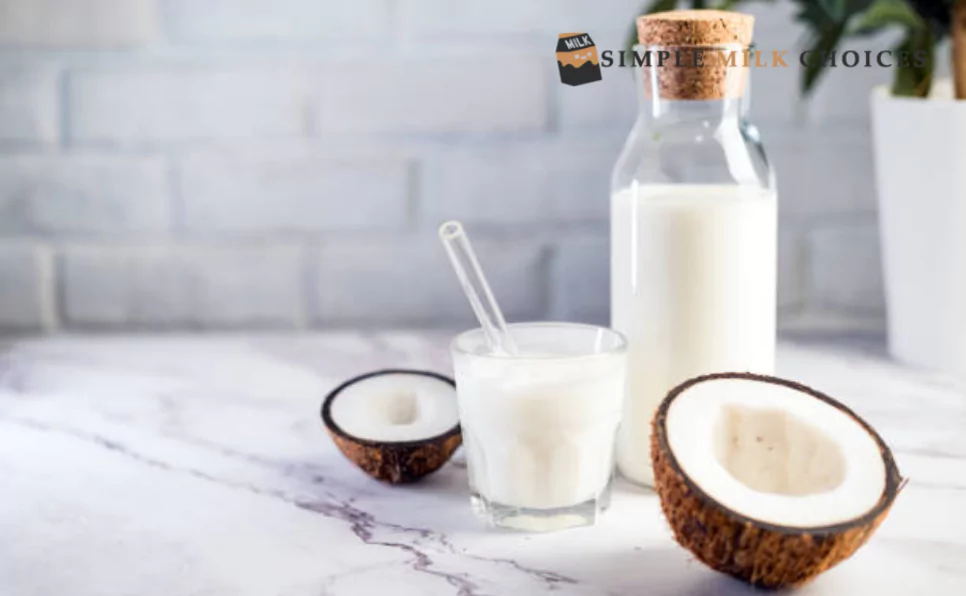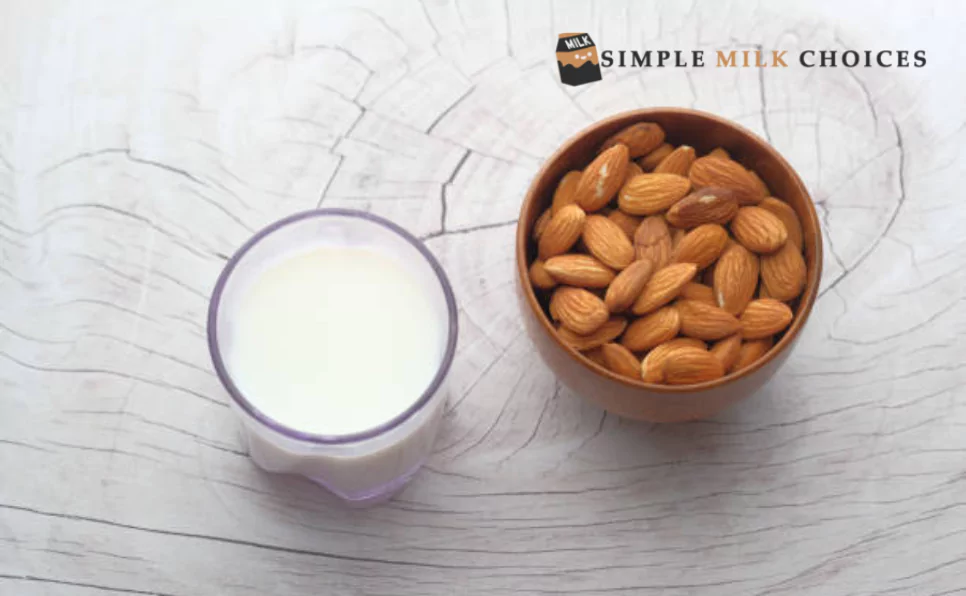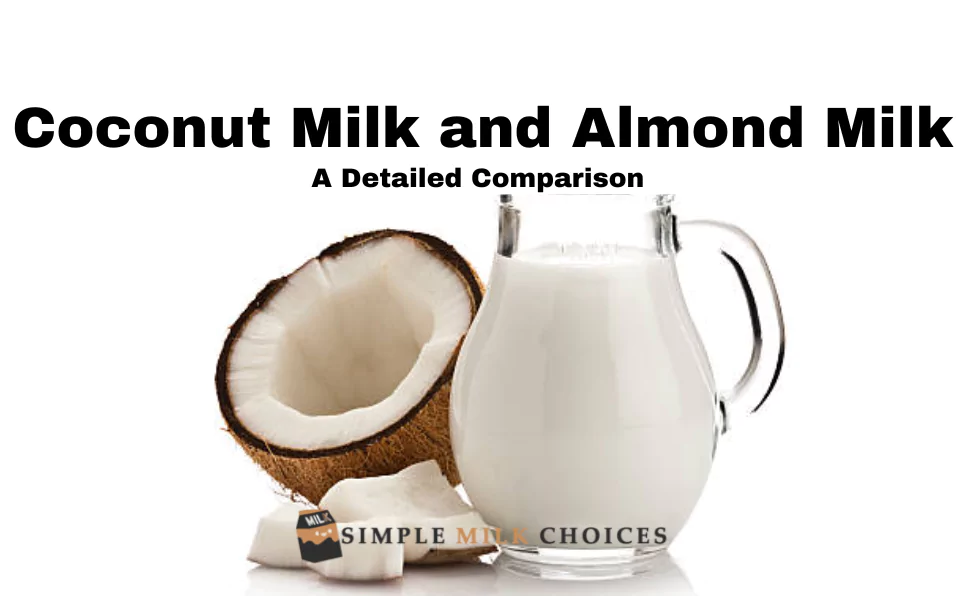In recent years, the growth in the prominence of plant-based milk options has upset the manner in which individuals approach their day-to-day dietary decisions. As dairy choices get some decent momentum, coconut milk and almond milk emerge as two noticeable competitors on the lookout. Understanding the subtleties between these two choices becomes fundamental for consumers looking for a reasonable replacement for traditional dairy. This article looks toward the complex differences between almond and coconut milk, revealing insight into their nourishing profiles, flavors, culinary purposes, natural effects, and wellbeing contemplations.
Nutritional Comparison between Coconut Milk and Almond Milk
Calories, Fats, Proteins, Nutrients, and Minerals in Coconut Milk
Coconut milk, removed from the tissue of coconuts, conveys a remarkable nourishing profile.
- It flaunts a rich, velvety surface, with a moderate carbohydrate level principally coming from its fat substance. The fats in coconut milk are to a great extent immersed, which adds to its sumptuous mouthfeel.
- Moreover, coconut milk contains fundamental nutrients and minerals, like iron, magnesium, and phosphorus, improving its dietary benefits.
Calories, Fats, Proteins, Nutrients, and Minerals in Almond Milk
Almond milk, created from ground almonds and water, is a lighter option with a lower calorie thickness.
- The fats in almond milk are generally unsaturated, advancing heart wellbeing.
- Almond milk is additionally supplemented with nutrients like vitamin D and vitamin E, giving it extra health benefits.
- In comparison, almond milk stands out due to its lower fat content and higher nutrient levels.
Featuring Key Contrasts and Likenesses
Recognizing the dietary components of coconut milk and almond milk is pivotal for consumers fitting their weight control plans to specific objectives for well-being. While coconut milk offers a creamier surface and an exceptional arrangement of minerals, almond milk succeeds in being a lower-calorie choice with an added nutrient base. The decision between the two relies on individual dietary inclinations and healthful necessities.
Micronutrient Examination
Beyond macronutrients, a more critical glance at micronutrients in coconut and almond milk uncovers nuanced contrasts. Coconut milk, plentiful in minerals like manganese, copper, and selenium, adds to cancer prevention agent safeguards and metabolic capabilities. Almond milk, with its added strength, turns into a wellspring of calcium and vitamin D, fundamental for bone wellbeing. Understanding these micronutrient profiles adds profundity to the dietary assessment.
Allergen Contemplations
Sensitivities play a huge part in dietary decisions. Coconut milk is generally thought to be okay for people with nut sensitivities, giving an option in contrast to the people who can’t consume almond items. However, coconut sensitivities do exist, but less usually. Almond milk, being nut-inferred, represents a gamble for people oversensitive to tree nuts. Individuals who have dietary restrictions should carefully review labels and make decisions based on their dietary restrictions.
Flavor and Taste Comparison between Coconut Milk and Almond Milk
Particular Flavors of Coconut Milk
Coconut milk contributes a particular tropical flavor to dishes and drinks. Its rich, coconutty flavor varies depending on how the milk is grouped, from subtle to overpowering. The normal pleasantness and fragrance go with coconut milk, a well-known decision in both sweet and flavorful recipes, adding a layer of intricacy to culinary manifestations.
Particular Flavors of Almond Milk
Almond milk, then again, offers a gentle, nutty flavor with a touch of pleasantness. The flavor of almond milk is, for the most part, more unbiased than that of coconut milk, making it a flexible ingredient in different recipes. The simple-minded nuttiness improves the general taste without overpowering different ingredients, which is interesting to people who favor a milder flavor profile.
Inclinations and Emotional Encounters
The inclination for coconut milk or almond milk frequently reduces to individual taste inclinations. Some might favor the tropical notes of coconut milk in curries and treats, while others might see the value in the downplayed nuttiness of almond milk in their morning espresso.
Understanding these flavor subtleties permits you to pick the milk elective that lines up with their culinary preferences.
Cooking with Coconut Milk
The distinct type of coconut milk gives it the status of a culinary pearl, especially in Southeast Asian and tropical foods. Its capacity to enhance dishes with rich coconut pith upgrades curries, soups, and sweets. The creamy surface of coconut milk settles on it, a characteristic decision for smooth sauces and without dairy-free frozen yogurts.
Understanding how to adjust and intensify the kind of coconut milk raises the cooking experience.
Cooking with Almond Milk
Almond milk, with its unpretentious flavor, enhances many recipes without overwhelming them. In flavorful dishes, heated almond milk blends perfectly into velvety soups and sauces. In baking, its lighter consistency functions admirably in recipes like biscuits and flapjacks. Dominating the utilization of almond milk in cooking is the production of tasty dishes with a wellbeing-conscious inclination.
Related Article: The shelf life of almond milk

Comparison of Coconut Milk and Almond Milk for Culinary Purposes
Applications in Cooking and Baking for Coconut Milk
Coconut milk’s creamy consistency and tropical flavor make it a culinary force to be reckoned with. It fills in as a vital ingredient in different foods, improving the richness of dishes, soups, and stews. In baking, coconut milk adds dampness and an unmistakable flavor to pastries like coconut milk-based puddings and cakes. Its flexibility stretches out to both sweet and flavorful dishes, making it a go-to decision for some culinary experts and home cooks.
Applications in Cooking and Baking for Almond Milk
Almond milk’s lighter surface and gentle flavor make it a magnificent substitute in both cooking and baking. In fine dishes, it supplements flavors without exceeding them, making it a reasonable addition to sauces and meals. Almond milk’s hidden sweetness upgrades the flavor of prepared products, from biscuits to hotcakes. Its capacity to mix perfectly into different recipes makes almond milk a favored choice for those looking for a flexible dairy alternative.
Flexibility in Various Recipes
The flexibility of coconut milk and almond milk opens doors to imagination in the kitchen. Coconut milk’s strong taste coordinates well with spicy and sweet profiles, while almond milk’s non-partisanship permits it to adjust to a more extensive scope of recipes. The decision between the two relies on the ideal result of the dish and the flavor profile that supplements different ingredients.
Ecological Effect Comparison between Coconut Milk and Almond Milk
Water and Land Prerequisites for Coconut and Almond Development
Analyzing the ecological effect of coconut and almond milk stretches out to the development of their separate sources. Coconut palms flourish in tropical areas, requiring more than enough water and reasonable land conditions. Almonds, dominatingly planted in California, have faced examination because of their water-escalated development, adding to worries about supportable cultivating practices.
Maintainability Practices in the Development of Coconut and Almond Milk
Maintainability rehearsals in milk creation incorporate factors like harvest turn, dependable water use, and fair work rehearsal. Some almond and coconut milk makers effectively take part in supportable cultivating drives, underscoring moral obtaining and earth cognizant practices. Users who are eager to lessen their biological impression might pick items from organizations focused on economic creation strategies.
Contemplations for Eco-Cognizant Consumers
For eco-cognizant consumers, the decision among coconut and almond milk reaches beyond personal inclinations to natural effect. Grasping the horticultural practices, water utilization, and, generally speaking, manageability initiatives of the brands behind these items enables consumers to settle on decisions lined up with their qualities. The natural contemplations add a layer of intricacy to the dynamic interaction, empowering an all-encompassing way to deal with milk options.
Bundling Contemplations
The ecological effect of plant-based milk options stretches out to bundling. Both coconut and almond milk frequently come in containers or jugs for certain brands focusing on eco-accommodating materials. Taking into account recyclability, biodegradability, and the carbon impression of bundling helps consumers settle on earth-conscious decisions. Picking brands focused on maintainable bundling lines up with a comprehensive way to deal with lessening ecological effects.
Moral Obtaining and Fair Exchange Practices
As past development rehearses, moral contemplations incorporate the treatment of laborers associated with the creation of coconut and almond milk. Organizations sticking to fair exchange practices guarantee that ranchers and workers get fair wages and work in safe circumstances. Moral obtaining adds to an all-the-more socially dependable shopper decision, elevating maintainability from homestead to table.

Health Considerations: A Comparison between Coconut Milk and Almond Milk
Potential Medical advantages of Consuming Coconut Milk
Coconut milk brings potential medical advantages to the table. The medium-chain triglycerides (MCTs) found in coconut milk might help with weight gain and provide a speedy energy source. Also, the minerals present, like iron and magnesium, contribute to general prosperity. However, control is critical, as coconut milk is calorie-thick and its saturated fat substance ought to be viewed as part of a balanced eating routine.
Potential Medical Advantages of Drinking Almond Milk
Almond milk offers its own arrangement of medical advantages. It is naturally low in calories, making it a reasonable choice for those checking their caloric intake. The presence of unsaturated fats, vitamin E, and different supplements contributes to heart wellbeing and, overall, calories. Almond milk’s hydrating characteristics, combined with its expected benefits for heart wellbeing, make it an engaging decision for people who are centered on maintaining a strong lifestyle. Moreover, almond milk and stomach-related health can remain closely connected, as it is considered normal and very much endured by those with lactose prejudice or delicate stomach-related structure.
Tending to Any Wellbeing Concerns or Contemplations
While both coconut and almond milk offer medical advantages, tending to potential concerns is significant. People with nut sensitivities should practice alertness with almond milk, while those aware of saturated fat admission might have to direct their utilization of coconut milk. Talking with a medical care professional can give customized direction in light of explicit wellbeing contemplations, guaranteeing that the selected milk elective lines up with individual health objectives.
Control and Adjusted Utilization
No matter what the medical advantages presented by coconut and almond milk, moderation remains essential. The two choices add to, generally speaking, calorie admission, and unreasonable utilization might prompt an imbalance in macronutrient consumption. Adding these milk options to a balanced diet makes sure you get more nutritional benefits without neglecting other important food groups.
Dietary Inclinations and Customized Sustenance
Individual dietary inclinations, like veganism or lactose bigotry, frequently guide the decision between coconut and almond milk. Understanding one’s dietary necessities takes into consideration a more customized way to deal with sustenance. Also, talking with nutritionists or dietitians can give customized direction, ensuring that dietary decisions line up with individual wellbeing and health objectives.
Conclusion
In the domain of plant-based milk options, the decision between coconut milk and almond milk stretches out a long way past personal taste preferences. It includes a thorough comprehension of wholesome subtleties, flavor profiles, culinary applications, natural effects, and health considerations. Both coconut milk and almond milk offer remarkable benefits, taking care of assorted dietary necessities and inclinations.
As consumers explore the walkways of dairy options, outfitted with information about the complexities of coconut milk versus almond milk, they can settle on informed choices that line up with their wellbeing, ecological, and moral qualities. The critical lies in perceiving that these options are not one-size-fits-all; rather, they take special care of a range of tastes, dietary prerequisites, and way of life decisions. Choosing between coconut and almond milk depends on personal preferences and informed guidance, whether you’re enhancing the richness of a curry or fortifying a morning smoothie.





